Amit Lal
Kilovolt Pyroelectric Voltage Generation and Electrostatic Actuation With Fluidic Heating
Nov 04, 2024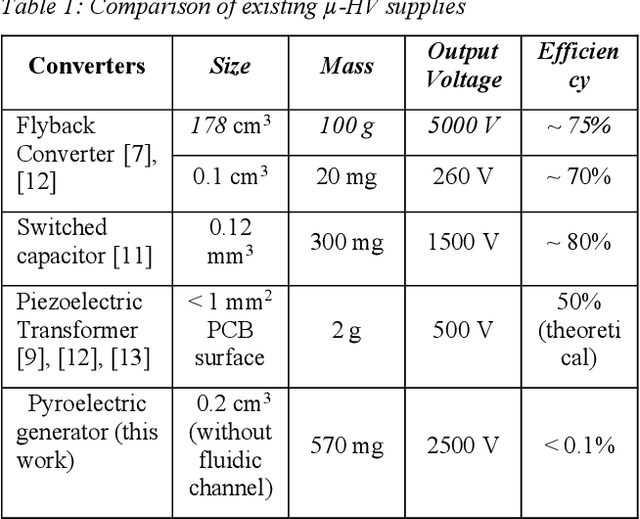
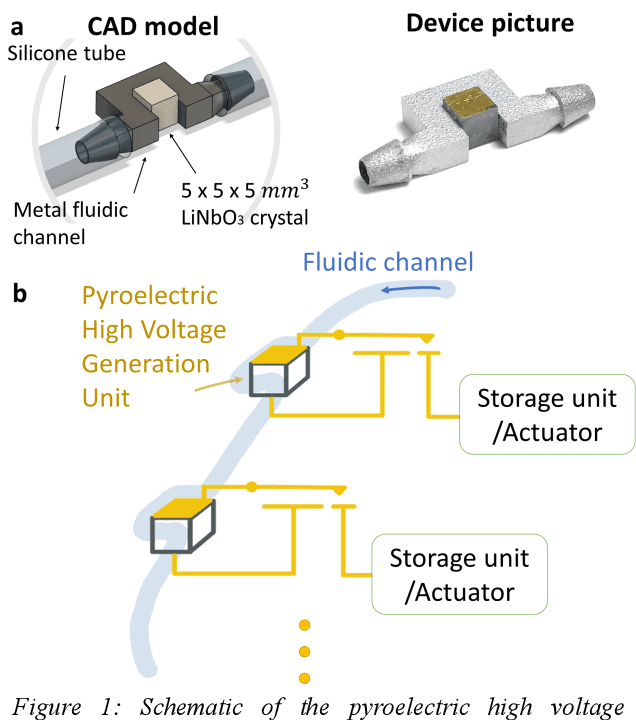
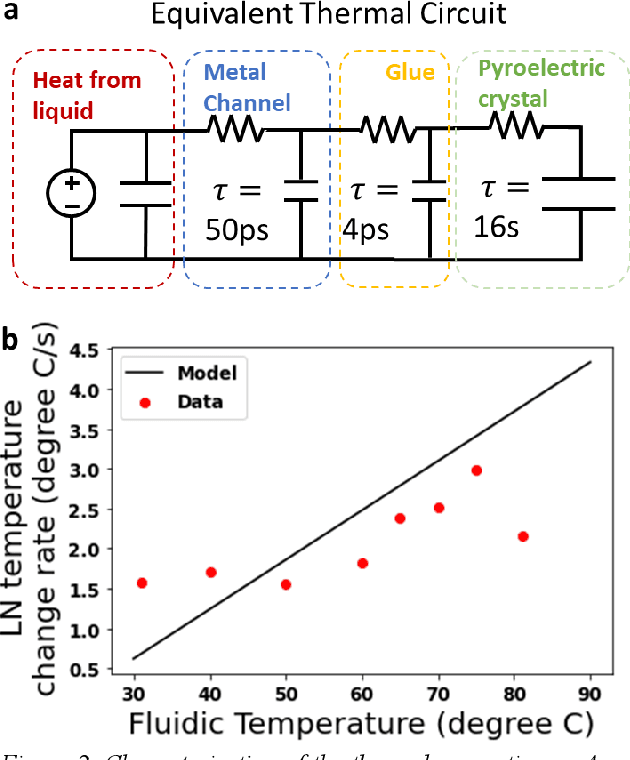
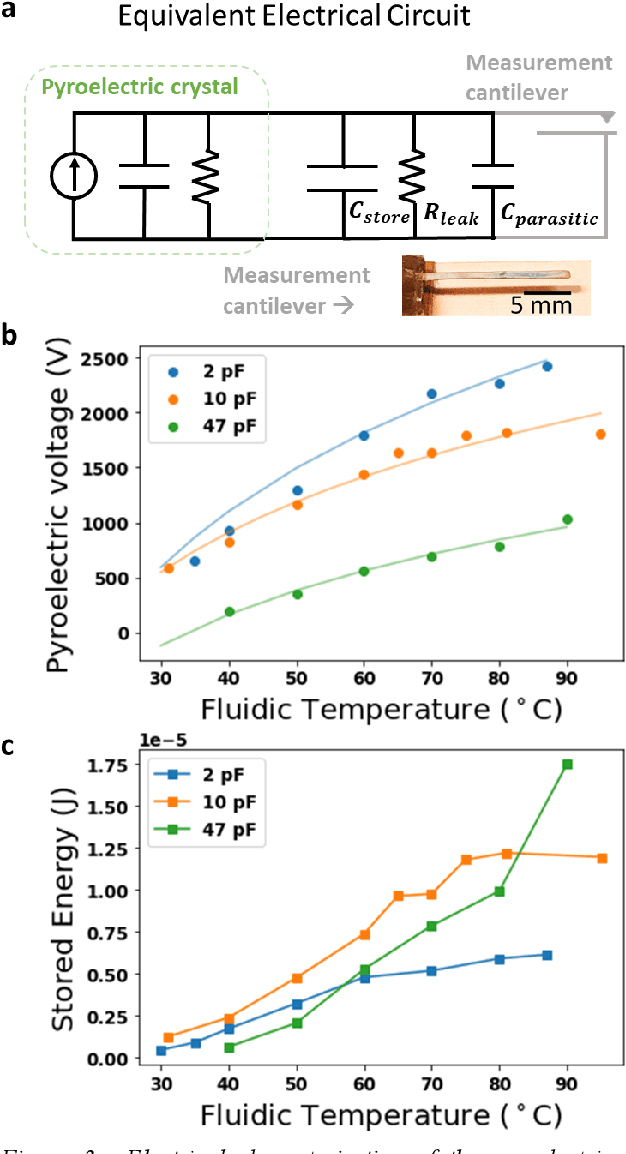
Abstract:Integrated micro power generators are crucial components for micro robotic platforms to demonstrate untethered operation and to achieve autonomy. Current micro robotic electrostatic actuators typically require hundreds to thousands of voltages to output sufficient work. Pyroelectricity is one such source of high voltages that can be scaled to small form factors. This paper demonstrates a distributed pyroelectric high voltage generation mechanism to power kV actuators using alternating exposure of crystals to hot and cold water (300C to 900C water temperature). Using this fluidic temperature control, a pyroelectrically generated voltage of 2470 V was delivered to a 2 pF storage capacitor yielding a 6.10 {\mu}J stored energy. A maximum energy of 17.46 {\mu}J was delivered to a 47 pF capacitor at 861 V. The recirculating water can be used to heat a distributed array of converters to generate electricity in distant robotic actuator sections. The development of this distributed system would enable untethered micro-robot to be operated with a flexible body and free of battery recharging, which advances its applications in the real world.
Structured illumination microscopy image reconstruction algorithm
Feb 19, 2016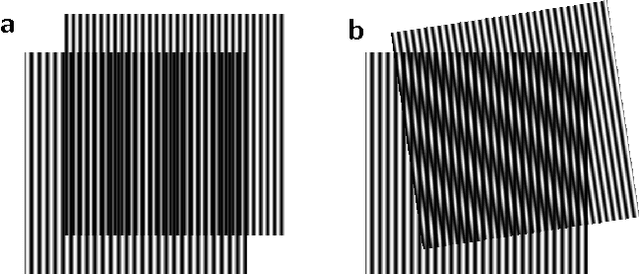
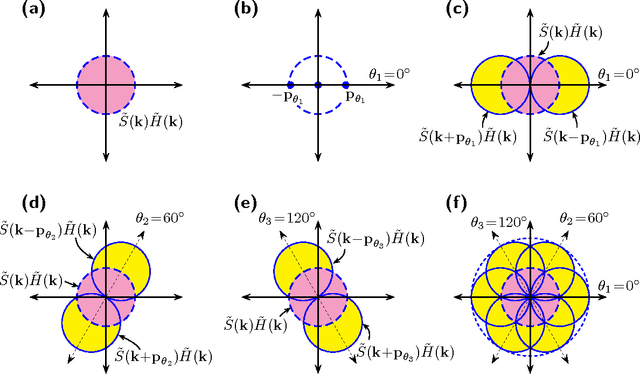
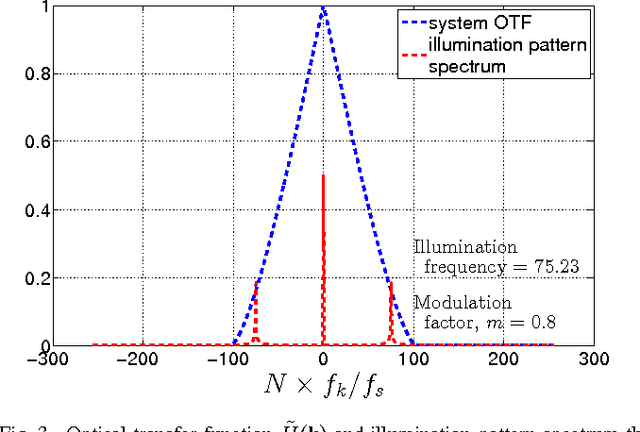
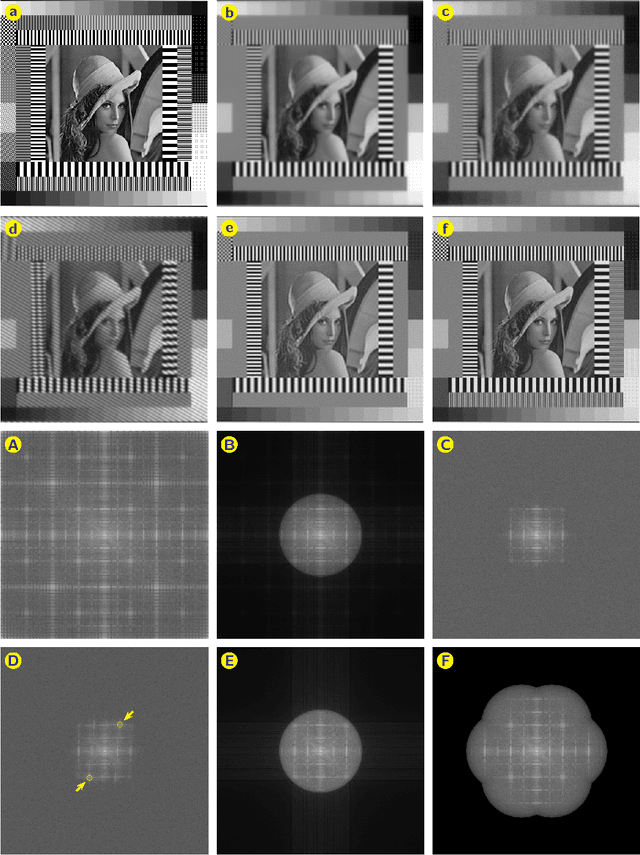
Abstract:Structured illumination microscopy (SIM) is a very important super-resolution microscopy technique, which provides high speed super-resolution with about two-fold spatial resolution enhancement. Several attempts aimed at improving the performance of SIM reconstruction algorithm have been reported. However, most of these highlight only one specific aspect of the SIM reconstruction -- such as the determination of the illumination pattern phase shift accurately -- whereas other key elements -- such as determination of modulation factor, estimation of object power spectrum, Wiener filtering frequency components with inclusion of object power spectrum information, translocating and the merging of the overlapping frequency components -- are usually glossed over superficially. In addition, most of the work reported lie scattered throughout the literature and a comprehensive review of the theoretical background is found lacking. The purpose of the present work is two-fold: 1) to collect the essential theoretical details of SIM algorithm at one place, thereby making them readily accessible to readers for the first time; and 2) to provide an open source SIM reconstruction code (named OpenSIM), which enables users to interactively vary the code parameters and study it's effect on reconstructed SIM image.
 Add to Chrome
Add to Chrome Add to Firefox
Add to Firefox Add to Edge
Add to Edge